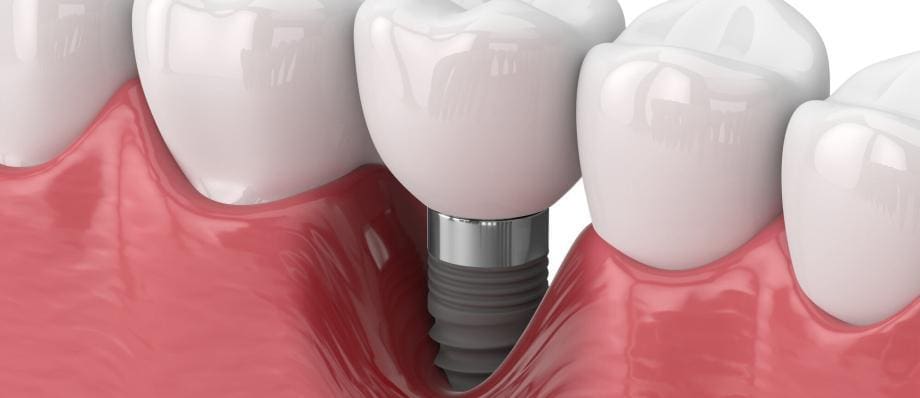Dental implants have revolutionized the field of restorative dentistry, providing a reliable and long-lasting solution for replacing missing teeth. However, like any medical procedure, dental implants can occasionally fail. Dental implant failure can be a distressing experience for both patients and dental professionals, as it can lead to complications and require additional treatments. In this comprehensive article, we will explore the various causes of dental implant failure, the symptoms to watch out for, and the available treatment options.
Table of Contents
ToggleCauses of Dental Implant Failure
- Inadequate Bone Quantity and Quality
- Poor Surgical Technique
- Infection and Peri-implantitis
- Allergic Reactions
- Overloading
Inadequate Bone Quantity and Quality
One of the primary factors contributing to dental implant failure is insufficient bone quantity and quality. For a successful implantation, there must be enough healthy bone to support the implant. If the bone is deficient or compromised due to conditions like periodontal disease or tooth extraction trauma, the implant may fail to integrate properly.
Poor Surgical Technique
The skill and experience of the dentist or oral surgeon performing the implant procedure significantly impact its success. Inadequate surgical technique, such as improper implant placement, can lead to complications, including implant failure. It is essential to choose a qualified professional with extensive implantology experience to minimize the risk.
Infection and Peri-implantitis
Infections around the implant site, including peri-implantitis, can cause implant failure. Peri-implantitis is an inflammatory condition characterized by infection and bone loss around the implant. Poor oral hygiene, smoking, and pre-existing periodontal disease can increase the risk of infection and peri-implantitis.
Allergic Reactions
While rare, allergic reactions to implant materials, such as titanium or zirconia, can occur. These reactions can lead to implant failure, necessitating its removal and replacement with an alternative material.
Overloading
Excessive or premature force applied to the implant before it has fully integrated with the bone can lead to implant failure. Overloading can occur due to factors such as chewing on hard foods too soon after the implant procedure or inadequate distribution of implants to support the anticipated bite force.
Symptoms of Dental Implant Failure
Recognizing the early signs of dental implant failure is crucial for prompt intervention and improved treatment outcomes. The following symptoms may indicate potential implant complications:
- Pain and Discomfort
- Swelling and Redness
- Mobility and Loosening
- Gum Recession
- Changes in Sensation
Pain and Discomfort
Persistent or worsening pain around the implant site can indicate a problem. Discomfort may occur during biting, chewing, or even at rest.
Swelling and Redness
Inflammation, swelling, and redness of the gums surrounding the implant should not be ignored. These signs can indicate an infection or peri-implantitis.
Mobility and Loosening
A stable dental implant should not move or feel loose. Any noticeable mobility or loosening of the implant may suggest a failure or lack of integration with the surrounding bone.
Gum Recession
Receding gums, exposing the implant surface, can be a sign of underlying complications. This can lead to sensitivity, discomfort, and aesthetic concerns.
Changes in Sensation
Numbness, tingling, or altered sensation in the lips, tongue, or surrounding areas may indicate nerve damage, which can contribute to implant failure.
Treatment Options for Dental Implant Failure
- Implant Removal and Replacement
- Treatment of Peri-implantitis
- Bone Grafting and Augmentation
- Corrective Surgery and Restorative Procedures
- Comprehensive Oral Hygiene and Maintenance
Implant Removal and Replacement
In cases of implant failure, it is often necessary to remove the failed implant. After allowing the affected area to heal, a new implant can be placed. Additional procedures, such as bone grafting, may be required to enhance bone quantity and quality before the replacement implant.
Treatment of Peri-implantitis
When implant failure is caused by peri-implantitis, treatment focuses on eliminating infection and promoting healing of the affected tissues. This may involve professional cleaning of the implant surface, debridement of infected tissues, and administration of antimicrobial agents. In some cases, surgical intervention may be necessary to remove the infected tissues and regenerate bone around the implant.
Bone Grafting and Augmentation
If there is inadequate bone quantity or quality to support a dental implant, bone grafting or augmentation procedures may be performed. These techniques involve transplanting bone tissue from another part of the body or using synthetic bone graft materials to enhance the bone volume and density at the implant site. This creates a more favorable environment for successful implant integration.
Corrective Surgery and Restorative Procedures
In situations where implant failure is caused by improper implant placement or functional issues, corrective surgery may be required. This may involve repositioning the implant, modifying the prosthesis, or adjusting the occlusion (bite) to ensure proper force distribution. Restorative procedures, such as crown or bridge replacement, may also be necessary to restore the aesthetics and function of the implant-supported restoration.
Comprehensive Oral Hygiene and Maintenance
Prevention is key to avoiding dental implant failure. After undergoing implant treatment, patients must maintain excellent oral hygiene practices to reduce the risk of infection and peri-implantitis. This includes regular brushing, flossing, and using antibacterial mouthwash. Routine dental check-ups and professional cleanings are also crucial for early detection of any potential implant-related issues.
Conclusion
While dental implants are generally a highly successful and predictable treatment option for replacing missing teeth, implant failure can occur in some cases. Understanding the causes, recognizing the symptoms, and seeking prompt treatment are essential to address implant complications effectively. Regular dental check-ups, proper oral hygiene practices, and choosing a qualified dental professional are crucial steps in minimizing the risk of dental implant failure. With proper care and timely intervention, most cases of implant failure can be managed, allowing patients to regain function, aesthetics, and overall oral health.

